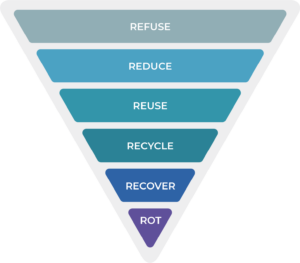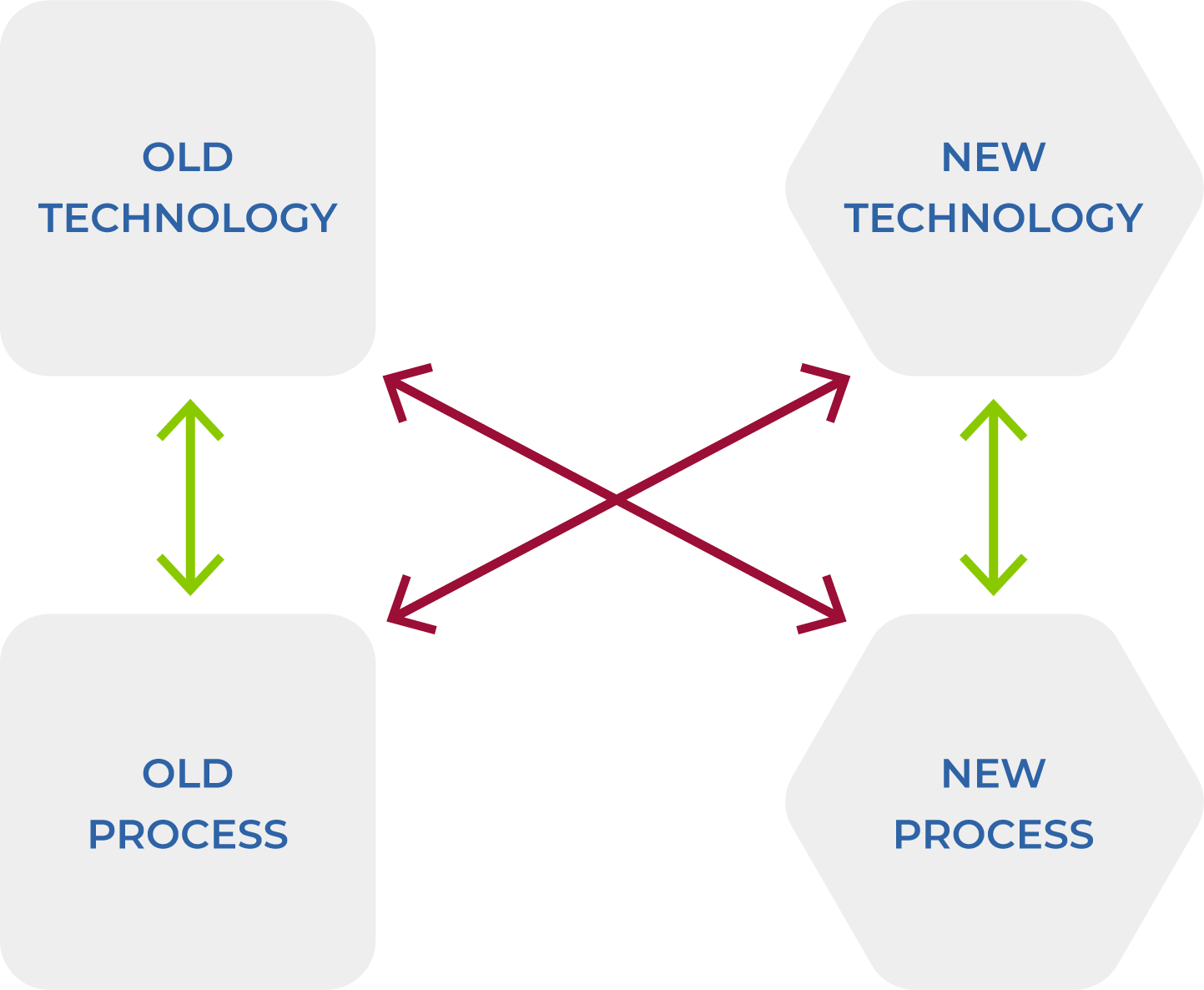Reduce – Reuse – Recycle
We’ve been hearing this mantra for decades now. Despite Recycle being the last on the list, we have been raised and conditioned to think that if we just recycle our water bottles, we are not part of the problem. However, whether we recycle or not, most waste generated in the US comes from industrial operations – around 97%.
As individual consumers, we should absolutely continue to practice the 3 Rs, and then some. As supply chain professionals, we cannot check this mindset at the door when we go to work. As we finally begin to accept that recycling is not the be all – end all, new Rs have been added to the list. Here are some additional ones (where Rot refers to composting):
Refuse – Recover – Rot

Source: University of St. Andrews Sustainability
Sustainability enthusiasts haven’t stopped there, and why should they? Here are some more Rs:
Rent – Repair – Repurpose – Rethink
But the one I really want to talk about today is Reshore.
We all heard about the ship that blocked the Suez Canal during the pandemic. What is getting less attention is that the Panama Canal is now becoming a bottleneck, not because of a big ship in the way; but because water levels are dropping, and the current water depth is not sufficient for many of the ships that normally use that route. And to make matters worse, the strategies they are using to address this are creating ecological issues.
This and other disruptions are occurring increasingly often, primarily due significantly to climate change and political unrest, but to other factors as well. The temptation of chasing cheap costs in faraway countries is waning as we are learning that while the direct cost may be lower, the externalities and unforeseen expenses and delays outweigh the benefits.
In another blog, I discussed why we need to shorten our supply chains and how to do it. One aspect of this is to bring production back to one place and focus on local sourcing.
Why is offshoring not as attractive as we once thought?
For one thing, it’s hard to oversee operations and foster strong working relationships with suppliers, partners, and even coworkers when they are in different time zones, and you’ve never met in person. You have to deal with cultural differences, legal disparities, and language barriers. Additionally, when complexities are present, it’s more likely for things to go wrong and for them to go unnoticed when they do.
But the biggest reason to move away from offshoring is the impact on daily operations of very long lead times, typically 3-4 months. The disadvantages of long lead times are easy to identify:
- Disruptions – A lot more disruptions can happen in three months than in three weeks. And when something does happen, longer lead times mean you must wait longer for the fix to reach you and for the system to correct itself.
- Uncertainty – Demand is much less certain three months from now than it is three weeks from now. With longer lead times, you must lock in on a plan much further out, increasing the chance that you will get it wrong. Supply is also less certain the further out you go. Moreover, when unexpected short-term changes in supply or demand happen, you will not be able to respond in time to avert disruption.
- Quality – Should your suppliers have a quality issue, it will take you months to find it and by then the issue could potentially have been persisting, translating into a much longer recovery period.
- Inventory – Long lead times translate into more cycle stock, in-transit stock, and safety stock (which is explicitly a function of lead time.)
- Waste – Long lead times, which translate into additional handling, will most certainly generate more waste. Things spoil, get lost, and break the more they are handled.
- Energy – Long lead times mean more time in transit, which means more energy consumed. This leads to greater greenhouse gas emissions and higher costs.
- Logistic costs – With an international supply chain, you will need staff to navigate the complexities surrounding taxes, tariffs, international law, and import/export operations, in addition to just more transportation costs.
So what does reshoring get you? Simply put, you get shorter lead times. Flip each of the above bullets and that’s the advantage.
Of course, reshoring is a long-term proposition, and fortunately it is already part of the S&P Global’s 2024 Supply Chain Outlook, which we unpack here.
And the sooner we think about it, the sooner we talk about it. The sooner we talk about it, the sooner we give it real consideration. And plan it. And make it happen.
It will require process changes. It will require mindset changes. Letting go of old habits is hard, but only when you do can you tackle technological changes. A client recently drew a version of this on a whiteboard during a design session and it’s my new favorite diagram:

The message here is “Do not cross the lines.” If you try to implement new technology on an old (subpar/obsolete) process, you will still get the wrong answer. You will just get the wrong answer faster. And that’s if you ever get the new technology in place. Square pegs don’t fit well into round holes.
Register now and join us on Wednesday, April 24, 2024 at 11 a.m. ET as I dive deeper into the ways to help you maximize the benefits of a shorter supply by giving you a tool to evaluate the impact of such changes virtually and help you ease into the changes at a pace that works for you when you are ready to embrace the change and reap the benefits.






